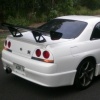New Cobb Tuning Maps
Announcements
-
Similar Content
-
Latest Posts
-
Nah no bearings, just slip fit. Would be a reasonably challenging but not impossible job to modify it to run bearings but I'm hoping that's not necessary as I may have well built one myself if I end up spending hours modifying it!
-
Brumbys with good shells are bloody expensive, I've looked at 2 "cheaper" cars, and walked away from both, plus after some research spare parts are fairly sparce I'm starting to think that I missed the boat on finding a clean one that is straight (ish) and without alot rust I'm starting to think about a old Hilux as panels and other parts are much more available as they sold tens of thousands of them I use to be indecisive but now I'm not sure
-
By soviet_merlin · Posted
A Brumby would probably fit a big metal toolbox in the back... this is how it begins -
Picked up a new OEM boot seal for the MX5 today as the old one got ripped a bit by me being a idiot by seeing if I could fit a large metal tool box in it, it didn't fit, and ripped the seal with the corner of the tool box I am still waiting on time to get the cams and new balancer installed, as well as the repairs to the boot Time will not be an issue soon though
-
I was more thinking so it doesn't flop around as much rather than for rotating it. Once you have the balance right, it should rotate well enough, depending on how much resistance there is on the pivot. I think you said the pivot point was on a bearing though didn't you?
-









Recommended Posts
Create an account or sign in to comment
You need to be a member in order to leave a comment
Create an account
Sign up for a new account in our community. It's easy!
Register a new accountSign in
Already have an account? Sign in here.
Sign In Now